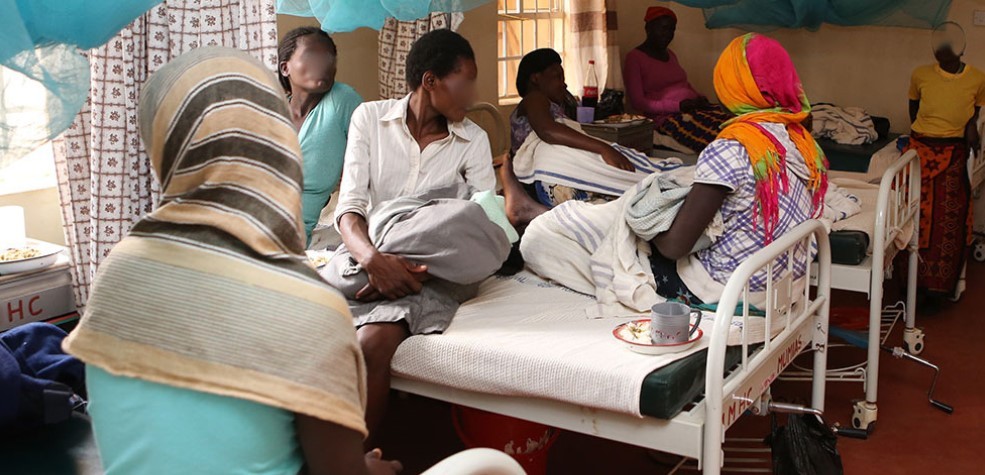Kenya losing 10 mothers daily to preventable postpartum haemorrhage, experts warn

Kenya’s high maternal death rate stems from systemic failures that are avoidable but consistently overlooked, endangering women’s lives and destabilising families.
Every day, 10 families in Kenya are devastated by the death of a mother due to postpartum haemorrhage (PPH)—the leading cause of maternal mortality in the country.
These women enter hospitals and clinics full of hope, anticipating the joy of hearing their baby’s first cry or feeling their first embrace. But for many, that hope ends in heartbreak.
More To Read
- Nairobi County moves to formalise and regulate childcare sector
- From free to unaffordable: Why more Kenyan women are giving birth at home again
- Hospitals with high maternal mortality to lose licences, says Ministry of Health
- From hope to despair: HIV patients left behind by Kenya’s health transition
- Marsabit Senator urges Senate to resolve CHP payment delays, water project setbacks
- New hope for mothers as WHO unveils life-saving guidelines to tackle postpartum haemorrhage deaths
They lie on labour ward beds or operating tables in facilities that are often overwhelmed and under-resourced. Then they bleed—sometimes silently, sometimes quickly—while families look on, powerless to help. According to health experts, postpartum haemorrhage is a fully preventable complication with proper care.
These women are not just statistics. They are mothers, daughters, and sisters—people with dreams and loved ones—whose deaths are reduced to data points in government reports under the label “maternal mortality.” But behind each number is a grieving child, a widowed spouse, a shaken community, and a family left broken.
Severe blood loss
The US Centres for Disease Control and Prevention (CDC) defines postpartum haemorrhage as the loss of 1,000 millilitres (about one quart) or more of blood within the first 24 hours after birth. It can also be diagnosed when a woman exhibits signs of severe blood loss, even if the exact volume isn’t known.
Kenya’s high maternal death rate is driven by systemic gaps, avoidable yet persistently ignored. These failures continue to put the lives of women and the well-being of families at grave risk.
Dr Einstein Kibet, a paediatrician and maternal and newborn health expert who heads Healthcare Quality at Mwai Kibaki Referral Hospital, warns that preventable causes like PPH still account for the majority of maternal deaths.
“We are still losing too many mothers due to bleeding, hypertension, infections, and postpartum haemorrhage,” says Kibet. “We cannot continue watching mothers die in this day and age. These are preventable deaths.”
Three delays
He attributes many of these deaths to what health experts call the “three delays”—points in the care process where women fail to receive timely, lifesaving treatment.
The first delay occurs at home, when families either don’t recognise the danger signs or hesitate to seek medical attention.
“The household may not recognise the danger signs, or they may delay making a decision. That indecision can be extremely dangerous,” Kibet explains.
The second delay happens after the decision to seek help has been made, but access to transport becomes a barrier.
“Some women live far from a health facility. By the time they reach the hospital—often after travelling long distances on poor roads—they’ve already lost a significant amount of blood,” he says. “That delay in arrival can be the difference between life and death.”
The third delay is within the health system itself.
Lack of blood, essential drugs
“Sometimes, even after arriving at a facility, mothers still die because the hospital lacks blood, essential drugs, or trained healthcare workers,” Kibet adds. “Poor quality care and delays within hospitals continue to cost lives.”
 Dr Einstein Kibet, a paediatrician and maternal health expert, urges a coordinated response to postpartum haemorrhage—from communities to national health systems. (Photo: Charity Kilei)
Dr Einstein Kibet, a paediatrician and maternal health expert, urges a coordinated response to postpartum haemorrhage—from communities to national health systems. (Photo: Charity Kilei)
To reverse this trend, Kibet calls for a multi-layered response, starting at the community level and extending to national healthcare systems.
“We must make sure mothers reach health facilities on time, and once they get there, they must find skilled professionals, medicines, and equipment ready.”
Although healthcare in Kenya is devolved to county governments, he sees signs of progress.
“Maternal health is a serious issue, and county governors are starting to acknowledge that,” he says. “But we need action, especially in human resources. We must employ more healthcare workers.”
Brain drain
He also raises concerns about a growing brain drain, as highly trained maternal health professionals are recruited abroad.
“We’re losing some of our best brains; many of those who’ve been trained in quality care and emergency obstetrics are being pulled away. We must find ways to retain this talent.”
To improve emergency care, the government and its partners are investing in training programs for emergency obstetric and newborn care.
“We’re training healthcare workers to manage emergencies better, but training alone isn’t enough. It must go hand-in-hand with providing the tools and supplies they need,” he says. “It’s a multidisciplinary approach.”
One life-saving tool now being introduced is the uterine balloon tamponade, or “post-balloon,” which can help stop bleeding before referral to a higher-level facility.
Kibet also emphasises the importance of antenatal care and early education.
“Every pregnant woman should attend antenatal clinics; they need to know when something is wrong—if there’s bleeding that won’t stop, if the baby isn’t moving, if there’s a severe headache or blurry vision. These are danger signs.”
Community health promoters (CHPs) are essential in this outreach, helping mothers recognise risks and seek care early.
“They must make sure mothers know the danger signs and seek help early. If we act on these signs quickly, we can prevent most of these deaths,” he says.
Currently, Kenya loses about 20 mothers daily to pregnancy and delivery-related complications, including PPH. According to experts, these deaths now outnumber those caused by road accidents.
At a media workshop hosted by UNICEF, Dr Moses Ombimbo, a maternal health expert, stressed the urgency: “If we cut postpartum haemorrhage, we could reduce maternal deaths by half.
He noted that 40 per cent of PPH deaths occur due to a lack of blood for transfusion.
Blood shortages are a major issue. Despite the growing population, Kenya collects only about 60 per cent of its annual blood donation target. The shortfall is linked to a weak culture of voluntary donation.
Digital initiative
To tackle this, Ombimbo is leading a digital initiative to connect hospitals with nearby blood donors in real time.
“People should know their blood type and be encouraged to donate regularly,” he says. The aim is to create mobile blood banks and organise communities before emergencies arise.
PPH is typically caused by uterine atony (failure of the uterus to contract), retained placenta, or trauma during birth.
While losing 500 ml of blood post-delivery is considered normal, even smaller losses can be fatal for anaemic women, who make up nearly 36 per cent of expectant mothers in Kenya.
The greatest threats, experts say, are still the “three delays”—in recognising danger signs, reaching care, and receiving timely treatment.
“These delays are killing mothers,” warns Ombimbo.
While innovations like uterine balloons are promising, many rural facilities still lack trained staff and basic equipment. Transport and blood availability are also major barriers.
Experts agree that improving antenatal care, community education, health financing, and referral systems is critical.
According to Kenya’s Ministry of Health, PPH causes around 3,000 maternal deaths annually, making it one of the country’s top killers of women in childbirth.
Across Africa, PPH accounts for 25–43 per cent of maternal deaths and affects roughly 10–11 per cent of all births. The continent bears about 70 per cent of the global burden of PPH-related deaths.
Globally, the World Health Organisation reports that PPH complicates 6–11 per cent of deliveries and causes 20–27 per cent of maternal deaths, resulting in 44,000 to 86,000 deaths each year. Approximately 14 million women experience postpartum haemorrhage annually.
Top Stories Today











































